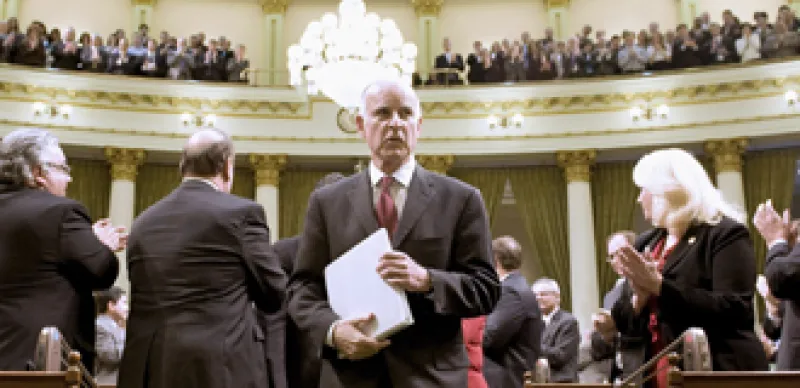California’s public pensions “are dangerously underfunded, the result of overly generous benefit promises, wishful thinking and an unwillingness to plan prudently,” says a controversial new report from the Little Hoover Commission, an independent state agency.
California’s governor and legislature should establish the legal authority for state and local governments to freeze pension benefits for current workers, recommends the Little Hoover Commission in the report released February 24, “ Public Pensions for Retirement Security.” Unless the state implements aggressive reforms now, the report predicts, “the problem will get far worse, forcing counties and cities to severely reduce services and lay off employees to meet pension obligations.” California’s 10 largest public pension plans faced a total shortfall of more than $240 billion in 2010, the report says.
The Little Hoover Commission, which recommends ways to make state programs more efficient and effective, suggests that the state switch to a hybrid retirement plan model combining a lower defined benefit pension formula with a defined contribution plan that has an employer match. The commission would like to see that happen for both current and future workers; a switch would not affect pension benefits already earned by current state employees.
Some see the need to move California’s public employees toward defined contribution plans — even current ones — as a pragmatic reality. “I agree with the Little Hoover Commission that real reform might not be possible without that, since the liabilities are so large,” says Adam Summers, a policy analyst at Los Angeles-based libertarian think-tank the Reason Foundation who wrote a 2010 paper proposing fixes for California’s public pensions. “In the private sector, companies have the ability to adjust benefits that will be accrued in the future.”
Public employees, not surprisingly, oppose the switch. “It flies in the face of very well-established state constitutional law in California,” says Dave Low, executive director of the California School Employees Association, whose 220,000 members work in support jobs at schools. Multiple legal cases in the state have established the principle that once a public employee has been promised a benefit, the employer “cannot revise or repeal that benefit without offering an offsetting benefit,” he says. And it violates collective-bargaining rights, he believes, adding that “it is sort of a Wisconsin-style proposal.”
The report looks to public employers, too, suggesting shifts such as allowing them to take contribution holidays “only in rare cases of fiscal emergency — not when pension assets appear inflated by temporary market surges.” The state and many public agencies now contribute less as a percentage of payroll than they did 30 years ago, Low says. And in 1999-2002, as markets rose, many public employers took a contribution holiday, he says. “At the same time, our members were contributing 7 percent of their salary each year,” he adds.
Public employers “are partly to blame,” Summers says. But he believes that the benefit rates have played the biggest part in California’s pension dilemma. California’s annual public pension and retiree health and dental care expenditures have quintupled since fiscal 1998-1999, from about $1 billion to $5 billion, his 2010 paper says.
The Little Hoover Commission also suggests steps including establishing an $80,000 to $90,000 cap on the maximum salary used to calculate pension benefits and setting pension-eligibility ages that do not encourage early retirement. It’s no shock when Summers says that most California legislators are not rushing to publicly champion the report’s suggestions and make them reality. “There is more of a climate for reform, but it will probably have to be a grass-roots effort led by citizens,” he says.
Summers predicts an increase in local and state ballot reform measures such as establishing a second tier of retirement benefits for new public workers or setting a higher retirement age. “But that is still tinkering around the edges of the system,” he says. With defined benefit plans for public employees, he says, “you are always going to have the problem that when the stock market turns down, the state and taxpayers will have to kick in more money at a time when they are least able to do so.”






